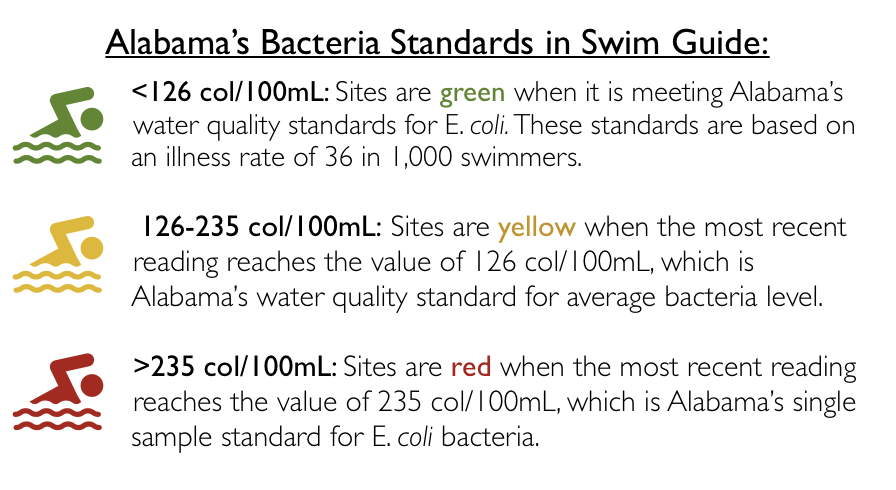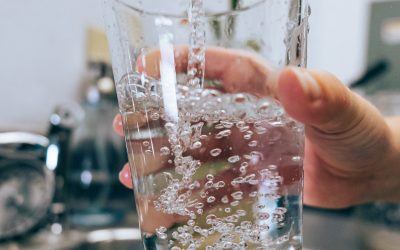Is it safe to swim?
This was the most common question we received at Coosa Riverkeeper in our first four years, and one that an answer wasn’t readily available for. No one was regularly testing popular swimming areas to make sure it was safe to swim. So, we decided to do that ourselves, and thus, our Swim Guide program was born. With Swim Guide, now in its fourth year, you can see water quality results at popular swimming areas every week in the summer. The program is funded by private grants, donations from our members, and our Swim Club.
Water quality testing is sophisticated. But, we try to make it very simple for the average user to understand this complex data with a simple green, yellow, and red color coding system. Does red mean you will absolutely get sick? No. Does green mean you absolutely will not get sick? Also no. In this post, we want to explain what those colors really mean.
The Science Behind the Colors
Our r ating system is based on Alabama’s water quality standards for E. coli bacteria. (An illness rate of 36 in 1,000 recreational users is the basis for Alabama’s water quality standards). This rating system is almost like a universal way of letting people know the likelihood they will get sick or an infection.
ating system is based on Alabama’s water quality standards for E. coli bacteria. (An illness rate of 36 in 1,000 recreational users is the basis for Alabama’s water quality standards). This rating system is almost like a universal way of letting people know the likelihood they will get sick or an infection.
What does a YELLOW swimmer mean?
At 126 col/100mL, we change a site’s color to yellow and describe it as having “moderately high E. coli.” This level, is Alabama’s average E. coli standard. If a waterbody has a level of E. coli that is greater than this, on average, it is considered “impaired,” or, essentially, unsafe for swimming.
- Starting at 126 colonies of E. coli per 100 mL of water, approximately 36 in 1,000 recreational users will contract some sort of illness.
- Illnesses can include swimmers ear, nausea & infection.
What does a RED swimmer mean?
- At 235 col/100mL, we turn a site’s status to red and describe it as having “high E. coli.”
- When more than 10% of individual samples exceed that level, that waterbody is likewise considered impaired.
Predicting whether or not someone will get sick is not as easy as a color coded system. Some people can still get sick at levels which are “green” and the majority of healthy people won’t get sick at a level which is “yellow.” So while the color coding system helps to quickly interpret the results, there’s always a risk and you should ALWAYS take precautions to swim safely.
How to Swim Safe
There are three really simple things that will bring your risk of contracting a recreational water illness way down:
- Don’t swim in an area with elevated levels of E. coli. Do this by checking Swim Guide, and avoiding swimming in natural waterbodies after a big rain when the water tends to be nastier;
- Don’t swim with cuts, scrapes, or really bad bug bites that you’ve been scratching. Any kind of open wound is a pathway to infection. If you get a cut or scrape while in the water, immediately get out of the water and disinfect and treat the wound and stay out of the water. Seek medical attention at the first sign of infection; and,
- Don’t go swimming if you are already sick. Not only is your immune system lowered, but you’re shedding your germs into the water where you might get other people sick!
This blog post was written by Frank Chitwood, Staff Riverkeeper



